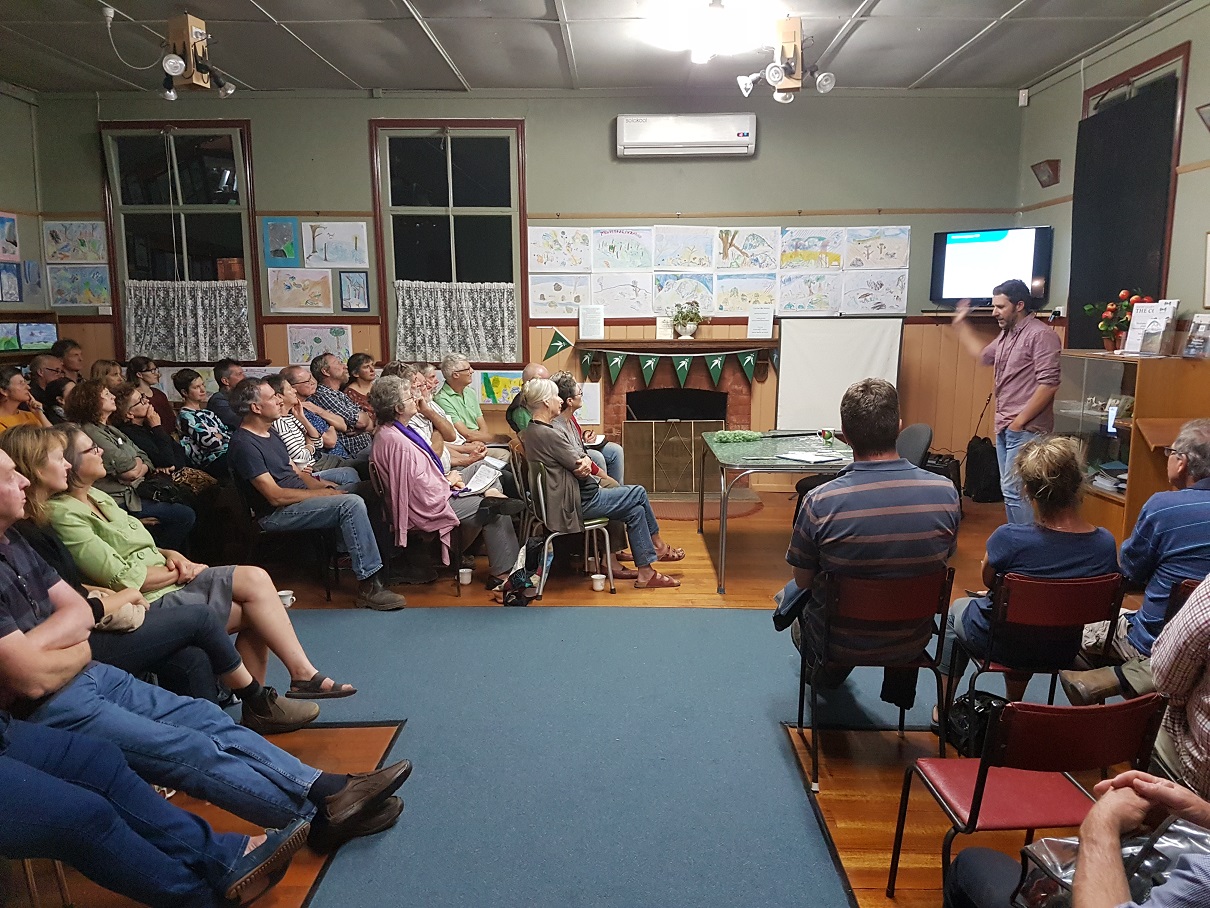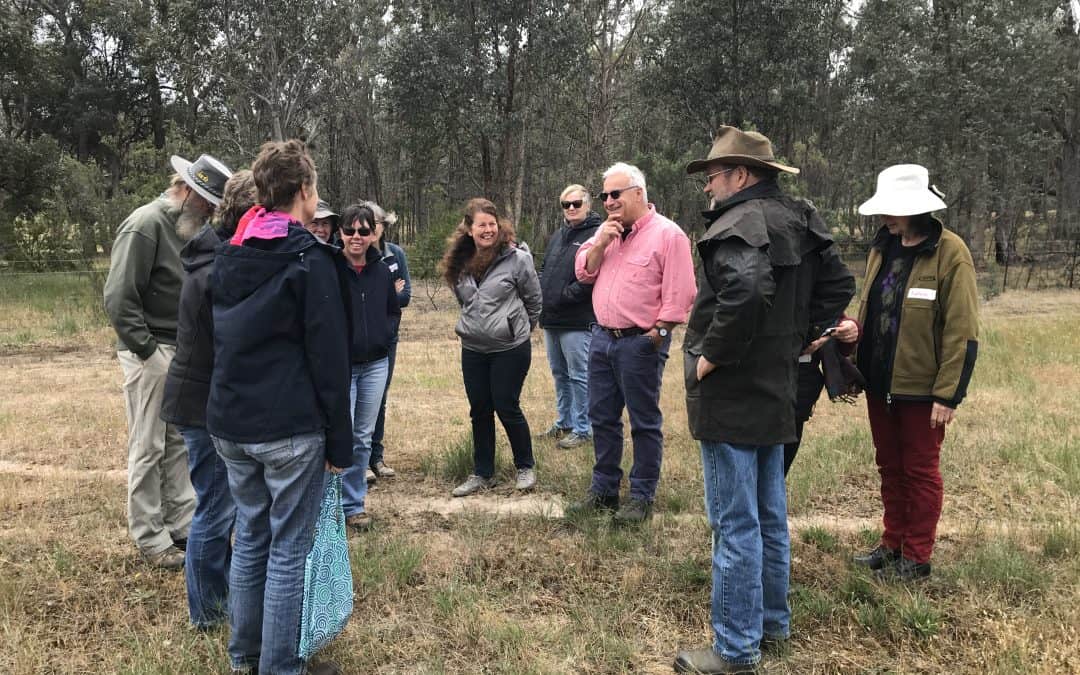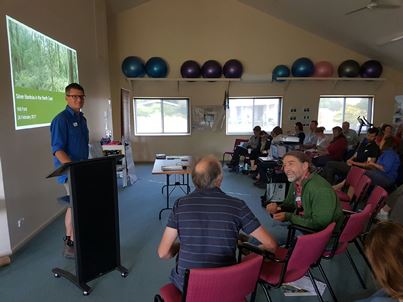BRING BACK THE BANKSIAS
The ‘Bring Back the Banksias’ project, supported by the Norman Wettenhall Foundation and coordinated by the ANPC from 2014 to 2020, aimed to:
- assist in improving the conservation status of Silver Banksia (Banksia marginata) across regional Victoria and south-western NSW.
- maintain a network and coordinate the efforts of the many agencies, groups and individuals concerned about or working on its conservation.
- collate a database of known past and current sites and populations of Banksia marginata, their distribution and issues.
- coordinate and participate in workshops for networking and information exchange.
- maintain communication and support funding and research opportunities to network members.
- identify and collate ecological and management issues and barriers for Banksia marginata restoration projects – establish needs and required support.
- address funding, research and extension in a more coordinated way
- promote and support wider awareness of the issues of this species’ decline and restoration plans.
- encourage the establishment and expansion of regional Banksia marginata seed production areas (SPAs) and restoration projects
- coordinate collections for genetic testing of Banksia marginata across its range.
- support the completion of genetic testing of Banksia marginata (separately funded project) to inform sound restoration strategies. (This work is now complete and was reported on at the 14th Australasian Plant Conservation Conference in October 2024 and an article in Australasian Plant Conservation is planned for 2025.
- use genetic findings to establish recommendations and strategies for seed procurement for restoration and best mixes for SPAs.
- support a more sustainable conservation outcome for the species and its habitats over a wider area.
Background
Banksia marginata is an iconic and keystone species in south-western NSW and across Victoria where it has undergone considerable recent decline across its once extensive range. This loss has occurred due to clearing, grazing by domestic and feral animals, direct damage from rabbits, destruction of rabbit warrens and wildfire. It has mostly disappeared from the landscape over most agricultural areas. There are many people and groups who value this species, not to mention its inherent biodiversity and habitat value, who are investing time and effort into its restoration. Natural regeneration is rare. The species’ genetic makeup and ecology was not well understood and relevant science and extension network support was needed to maximise the efforts and outcomes in restoration.
The geographic scope of the project covered the Mallee, Wimmera, Central, North Central, Goulburn Broken, and North East Victorian CMA regions, the Victorian Volcanic Plains in Glenelg Hopkins CMA, and the Murray Local Land Services region in NSW.
Achievements
The project established a highly successful ‘Bring Back the Banksias’ network with a wide range of agencies, groups and individuals which facilitated significant networking, communications, information exchange, community capacity building and citizen science which will ultimately lead to the implementation of sound restoration strategies and on-ground action outcomes for Banksia marginata. The network was established through a series of workshops and expressions of interest, and expanded during the project through word of mouth, media and newsletter promotion and the ANPC’s networks. Overall, over 600 interested Banksia marginata contacts were established
The project collated, mapped and documented the location, distribution and management issues of known relict or remnant populations of Banksia marginata across its range. This was assisted by the completion of questionnaires by those who knew of these locations. Obtaining this information was imperative for helping to conserve and protect the remaining populations. Efforts were made to ensure that the appropriate geographic target collections were identified and undertaken, and appropriate established protocols and data collections were made.
Genetic samples were collected from Kangaroo Island, mainland SA, Victoria (SW, NW, C, NC, NE), NSW (SW, SE, CW, NT Blue Mountains), Flinders Island and Tasmania. Collections were undertaken over an extended period of time due to time availability, climatic, fire, logistical and remote travel issues, as well as COVID-19 restrictions. These were then provided to the Royal Botanic Gardens Sydney for database storage and genetic analysis (separately funded project) to determine genetic relatedness and range of populations. This is now complete and broad interpretations prepared for publication (in preparation by Maurizio Rossetto from Royal Botanic Gardens Sydney). This information will be used to help guide seed collection strategies for the establishment of SPAs and future field restoration works.
The project assisted with the establishment of four Seed Production Areas and the initiation and planning for two others.
The ‘Bring Back the Banksias’ project resulted in an expansion of knowledge on the species distribution and population health, and increased numbers of groups and individuals working on this species’ restoration efforts, as well as increased networking and communication between the network’s members. Site distribution data of known extant Banksia marginata populations were amalgamated into a database across a total of four States, and some common needs were identified (genetics, SPA support and establishment, restoration resourcing and knowledge, effective communication and networking between groups and areas).
Workshops
Eight workshops were held altogether including Chiltern (November 2016) and Wangaratta (February 2017).
Three workshops were held in Hamilton (February 2015), Bendigo (11 March 2015) and Lake Bolac (March 2015), to help determine the approach, scope and objectives of the project, with over 90 participants altogether, along with a huge response from others wanting to be involved in the project as it evolved. Read the report here.
On 19 March 2018 more than 60 Victorian Banksia lovers came together at the Harcourt ANA Hall in central Victoria to hear the latest update on genetics research on Banksia marginata. Read the report here.

Adam Miller presenting the results of his latest genetic research on Banksia marginata to a full house at Harcourt, Victoria. Photo: Martin Driver
On 10 November 2019, Wooragee Landcare Group in north-east regional Victoria held a Declining Species workshop including Banksia marginata. ANPC’s Project Manager, Martin Driver spoke about a vital aspect of working with declining species – that is ensuring sources of seed are available for revegetation. Inadequate seed supplies are one of the blockers for revegetation being carried out on a sufficient scale to prevent species decline, and for focusing on particular declining species. Read the report here.

ANPC’s Martin Driver leading the Wooragee field trip to local farm where remnant vegetation has been fenced off from grazing. Photo: Sue Brunskill
On 24 February 2017 a workshop was held at Lake Bolac in conjunction with Glenelg Hopkins Catchment Management Authority and the Friends of the Forgotten Woodlands. Download the report here. The workshop brought together almost 70 interested people from across Victoria and interstate including landowners, landcare practitioners, seed collectors, nursery suppliers, propagators, researchers, project officers and consultants. It outlined what had been happening with regards to Banksia marginata research, mapping, genetics and seed orchards – for example Dr Adam Miller (Deakin University) reported on his preliminary findings on the genetic structure of the scattered populations of Banksia marginata on the Victorian Volcanic Plains.

Participants at the Lake Bolac workshop on 24 Feb 2017.

Will Ford from Trust for Nature presenting at the Lake Bolac workshop.
A Bring Back the Banksias e-newsletter was released in July 2016 to update everyone on all things happening with Silver Banksia.
The first newsletter of the newly incorporated group Friends of the Forgotten Woodlands Inc. which operates within the Victorian Volcanic Plains (VVP) was released in December 2016. The group covers many woodland species such as Silver Banksia, Sheoak, Wattle, Bursaria and Tree Violet that were once significant keystones of the ecology of the VVP.
The Bring Back the Banksias project was managed by ANPC Project Manager, Martin Driver.



